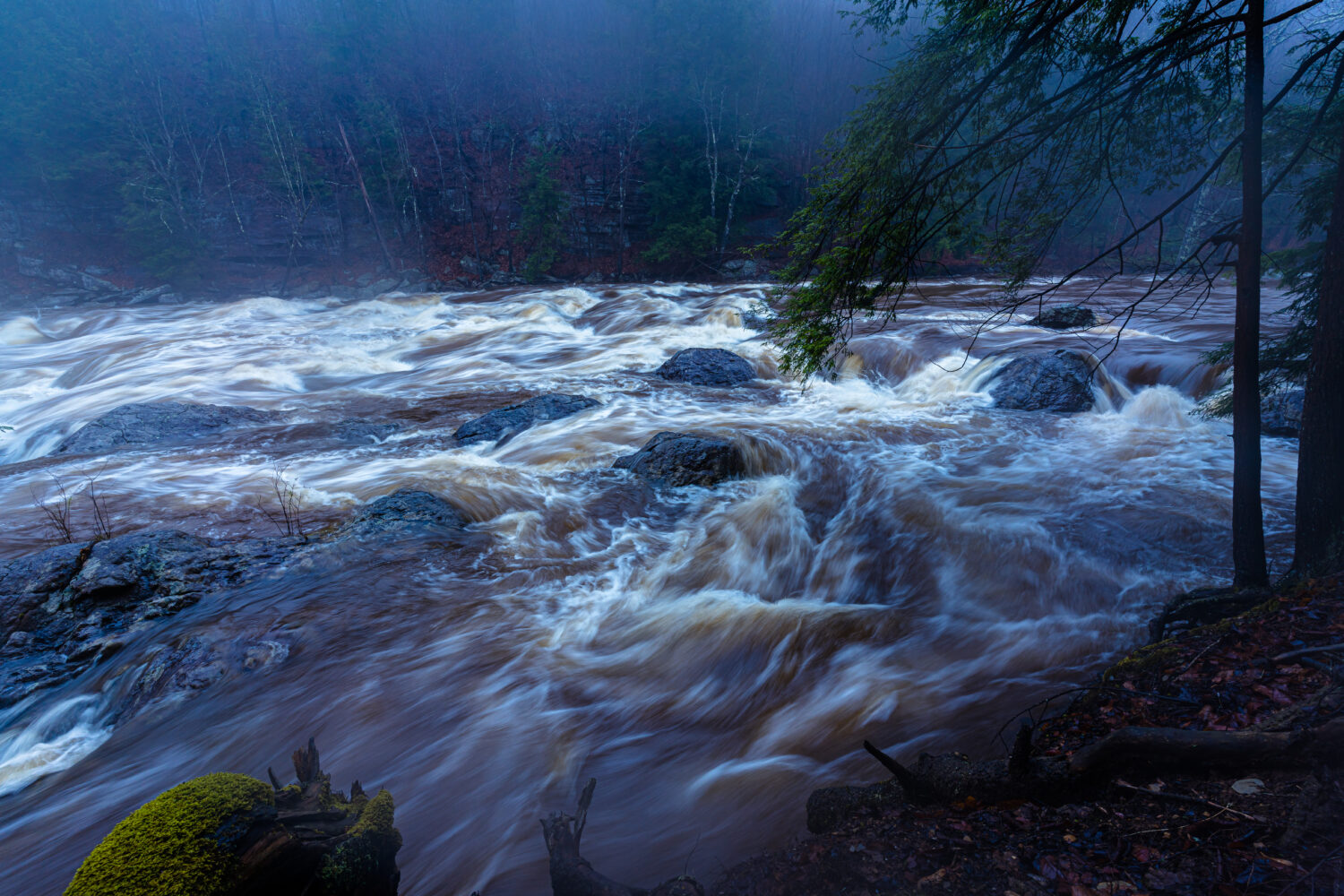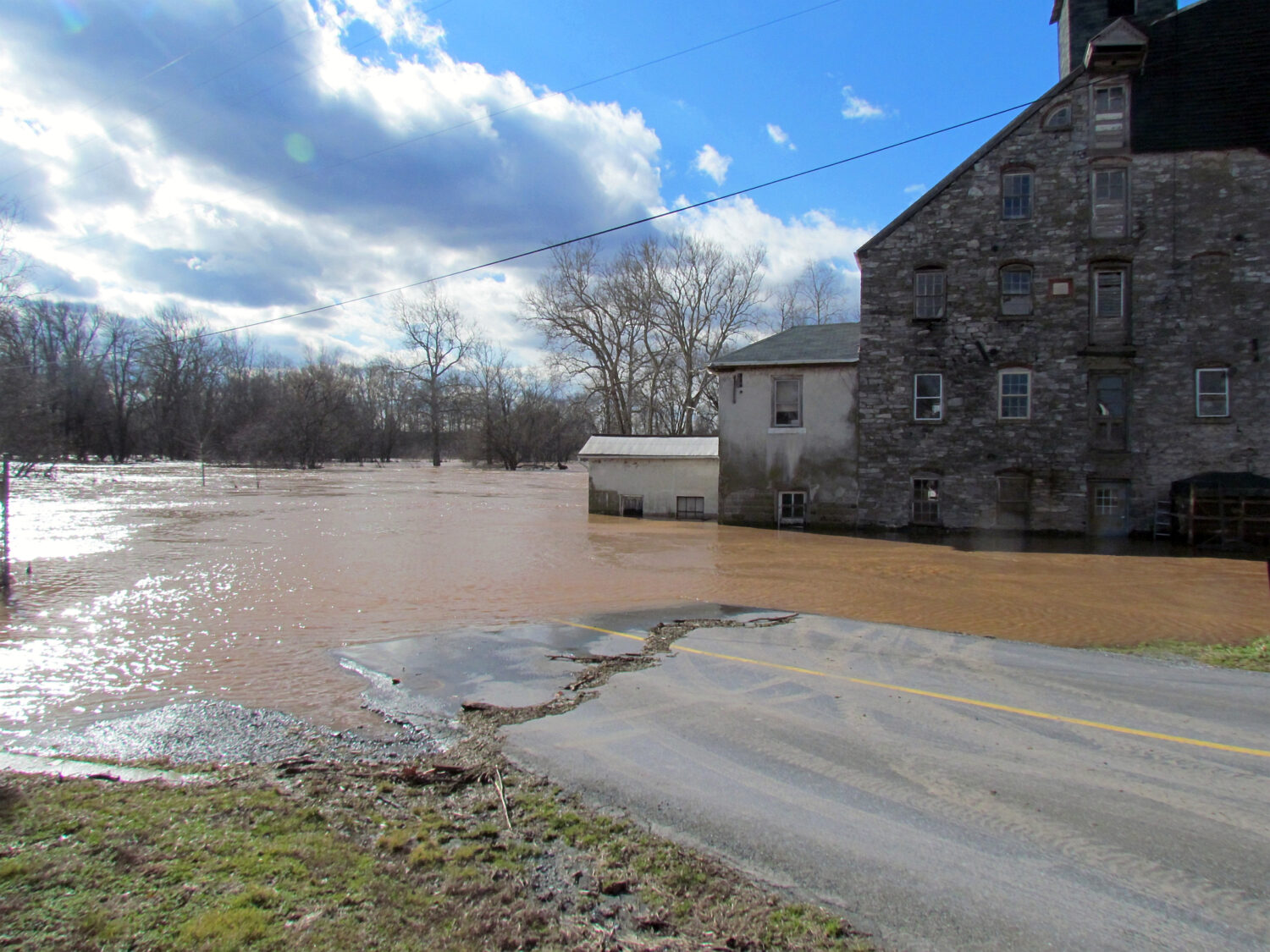Discover the Pennsylvania Town That Got 15 Inches of Rain in Just 1 Hour!
Meteorological record seekers, take note: the worst single hour of rainfall in Pennsylvania history took place on July 18, 1942. Pennsylvania has seen its share of thunderstorms, tornadoes, and even human-caused flooding disasters. (We’ll cover that tale of turn-of-the-century tycoons within.) Yet the storm that fell on Smethport and Port Allegany, Pennsylvania outdoes them all. A full 15 inches of rain fell in this Pennsylvania town in just 1 hour. In present-day dollars, $160 million worth of damage was done in a less than 24-hour period. That puts all other water-based disasters in the state before or since to shame. Let’s discover more about Smethport, the Pennsylvania town that got 15 inches of rain in just 1 hour.
Beginnings of a World Record Rainfall
The rains began on the night prior to the greatest single hour of rainfall in Pennsylvania history, between 8:00 and 9:00 p.m. on July 17, 1942. What meteorologists call a stationary frontal boundary of clouds traveled from the Great Lakes to New York, borne by light winds. This atmospheric phenomenon is a precursor to thunderstorm cells clustering — it is said to “train” them into being. The rainclouds formed over nearby Cohocton, New York, and swiftly began dumping rain. As the system moved into Pennsylvania, its progress slowed due to the hilly terrain there. This both enhanced the amount of rain, and trapped the storm so it could not move away from the region. This is how the Smethport Storm was triggered. Soon, it grew into a bona fide thunderstorm — a historically intense storm, in point of fact.

Image: JD Hiker, Shutterstock
©JD Hiker/Shutterstock.com
The Storm Gets Underway
On July 18, the storm only increased. It unleashed an intense five-hour period of extremely heavy rain, lightning and thunder on Smethport and Port Allegany. It was the worst storm even long-time residents had ever seen. They reported lightning flying across the sky almost constantly, occasionally making landfall but largely from one thunderhead to another. They say the rain fell not in droplets but in streams, some as thick as a rope. People navigating the rain claimed it was so heavy, you had to search for pockets of air to breathe amidst the falling water.
Floodwaters rose with incredible rapidity, trapping many locals on their rooftops, or in even more perilous circumstances. Many believed they would drown in the storm’s waters, and many, in fact, did.
Destruction of the Smethport Area
Rising as swiftly as they were, the floodwaters soon overwhelmed a nearby dam in Austin, Pennsylvania. This dam was built to provide mill energy to the Williamson Pulp and Paper Company. It had a capacity of 65 million gallons of water. Yet it was not strong or deep enough to withstand such an unprecedented force as the Smethport Storm. When the dam was breached, the town of Austin flooded completely in a matter of moments. The walls of water were so powerful that buildings were knocked off their foundations by the force. The same phenomenon occurred when the dikes were breached in nearby Emporium, Pennsylvania. This soon resulted in an untenable situation becoming an instantaneous disaster. Locals reported that a five-foot accumulation of water leaped to eight feet, then ten, in a matter of moments.
Deadly Walls of Water and Debris
Huge amounts of gravel, rocks, debris and even boulders out of the bedrock were dislodged and washed violently away by the flooding. These blowouts created violent avalanches of water, filled with sharp debris moving at immense speed. To be caught off-guard and swept away by such a blowout, as many were, was almost certainly a death sentence.
These slides were so powerful, they could uproot and move trees in their wake. In some miraculous cases, whole groups of trees, remaining vertical, were moved violently downhill as much as a mile. Yet as soon as they slid to a stop, they rooted in their new locations and went on growing. But the people these slides uprooted were, tragically, not so adaptable or resilient.
When all was said and done, an astonishing and terrifying record had been set: the heaviest rainfall had been between Smethport and Port Allegany, where nearly 31 inches of rain had fallen in just four and a half hours. Within that statistic is an even more amazing one: this Pennsylvania town got 15 inches of rain in just one hour.
Effects on the Wider Region
Of course, such a gigantic storm system had ill effects far beyond its epicenter in Smethport. This historically large water dump covered all of North-Central Pennsylvania and nearby parts of New York, touching four Pennsylvania counties (Cameron, Elk, McKean, and Potter County) and two in New York (Allegany and Steuben County). Many of these localities reported receiving more than 30 inches of rain. More than 20 inches of rain fell on an area covering 200 square miles. Perhaps most amazingly, more than 10 inches of rain fell on an area of over 2,000 square miles.
Floods continued long after the initial rains: the water rose higher than ever recorded on the First Fork and Driftwood Branches of Sinnemahoning Creek, and on the Allegheny and Clarion Rivers. The flood drainage areas related to these rivers reported greater volumes of water than ever recorded, both in Pennsylvania and New York.
Almost no town was spared major damage. Dozens, if not hundreds, of people were rendered homeless over a day’s time. There were places where the water on the main streets remained five feet deep for days.
Fire and Rain in Port Allegany
Though the heaviest rains were in Smethport, the town that saw the most damage was Port Allegany, where practically no business was spared severe flooding. To make matters worse, the town was holding a conference at the time in the Port Allegany Free Methodist Church. In addition to the normal residents, dozens of out-of-towners required rescue from the rains and currents. Nearly 200 people had to be saved from rooftops, trees and floating debris. The Methodist Church was itself washed from its foundations. It smashed into a silk mill nearby, which — in the midst of a historic flood — caught fire. In a tragic symphony of fire and water, the entire area was destroyed.
Johnsonburg, Pennsylvania saw an eight-foot-tall wall of water take out their town when their own dam broke, shoving homes from their foundations and stranding 18 families in the wreckage.
Wreckage of Local Infrastructure
Services and transportation suffered, too, of course: many in the area lost access to water, electricity and gas. Bridges washed away. Highways and railroads became unusable. 75 miles of rail track in Pennsylvania were damaged, and one train even got stranded when a bridge collapsed. The Smethport storm even closed two rail lines for good: the Coudersport and Port Allegany Railroad, a route from Port Allegany to Roulette, Pennsylvania, and a 27-mile stretch of Baltimore & Ohio rail between Sinnemahoning and Austin were so badly decimated that the railroads simply abandoned them.
This disaster takes on an even direr aspect when we remember the year: 1942. Deep into World War II, in an area full of industries important to the Allied war effort, America lost a diverse spate of factories, which had been working at maximum capacity to help win the war.
The Flood Could Have Been Even Worse
Though the Smethport Storm may seem like a story of humankind’s insignificance to nature, it is also a story of lives saved through careful planning and engineering. The storm tested the limits, and certainly overwhelmed them at times, of three different drainage basins in the area. These are the Susquehanna, which leads to the Chesapeake Bay, the Allegheny on the Ohio River, and the Genesee tributary of the Saint Lawrence River. The closer you lived to one of these basins, the less severe the knock-on effects of this once-in-a-lifetime storm event.
Notwithstanding, 15 souls were lost to the Smethport Storm, and the damages ran to $10 million — equivalent to $160 million in the 21st century.

Image: Richard L. Bowman, Shutterstock
©Richard L. Bowman/Shutterstock.com
The Worst Flood in Pennsylvania History Since Johnstown
In 1889, Pennsylvania had suffered a similar humanitarian disaster due to flooding — the worst of the 19th century. This flood, however, was the sure result of both nature and man — one man, as it happens.
Henry Clay Frick was Andrew Carnegie’s chosen lieutenant to run Carnegie Steel. Frick was, by all accounts, a ruthless individual. He would go on in later years to hire Pinkertons to murder his striking workers. Frick himself would be the subject of an assassination attempt. Yet in 1889, his villainy was only getting started.
Johnstown was a poor town; yet Frick was determined to turn the reservoir above them into a private club and retreat for himself and his wealthy cohorts, many of whom were executives of Carnegie Steel.
If you can believe it, Henry Frick had this dam weakened for one selfish reason: in order to build a road across it to accommodate his cronies, the reservoir would have to be lowered.
Beginnings of the Johnstown Flood
On Friday, May 31, an unexpected rainstorm overwhelmed the weakened dam. It broke, flooding Johnstown below. 15 million cubic meters of water were released in a matter of moments. In the horrendous aftermath, the American Society of Civil Engineers assessed the dam and determined that it would have given way even if it hadn’t been weakened by Henry Clay Frick. But this claim has since been seriously challenged. Chances are that, if not for the interference of this feckless tycoon, over two thousand lives could have been saved.
2,208 people died in the Johnstown flood — the largest loss of civilian life to that point in United States history. Comparing that with the 15 casualties of the Smethport Storm, it’s fair to say the nearly 100 years of progress between them represent hard lessons learned — and implemented to save many lives.
The force of the dam break was so great, bodies were found as far away as Cincinnati, Ohio. As major a humanitarian disaster as this was, it became one of the first major challenges for the still-young American Red Cross, led by Clara Barton.
Aftermath of the Johnstown Flood
In the aftermath of the flood, a team of survivors attempted to recover damages from the dam’s owners. They were defeated in the courts, time and again. Ultimately, this led to changes in American law to make negligent owners of businesses or utilities more liable for their actions and inactions.









